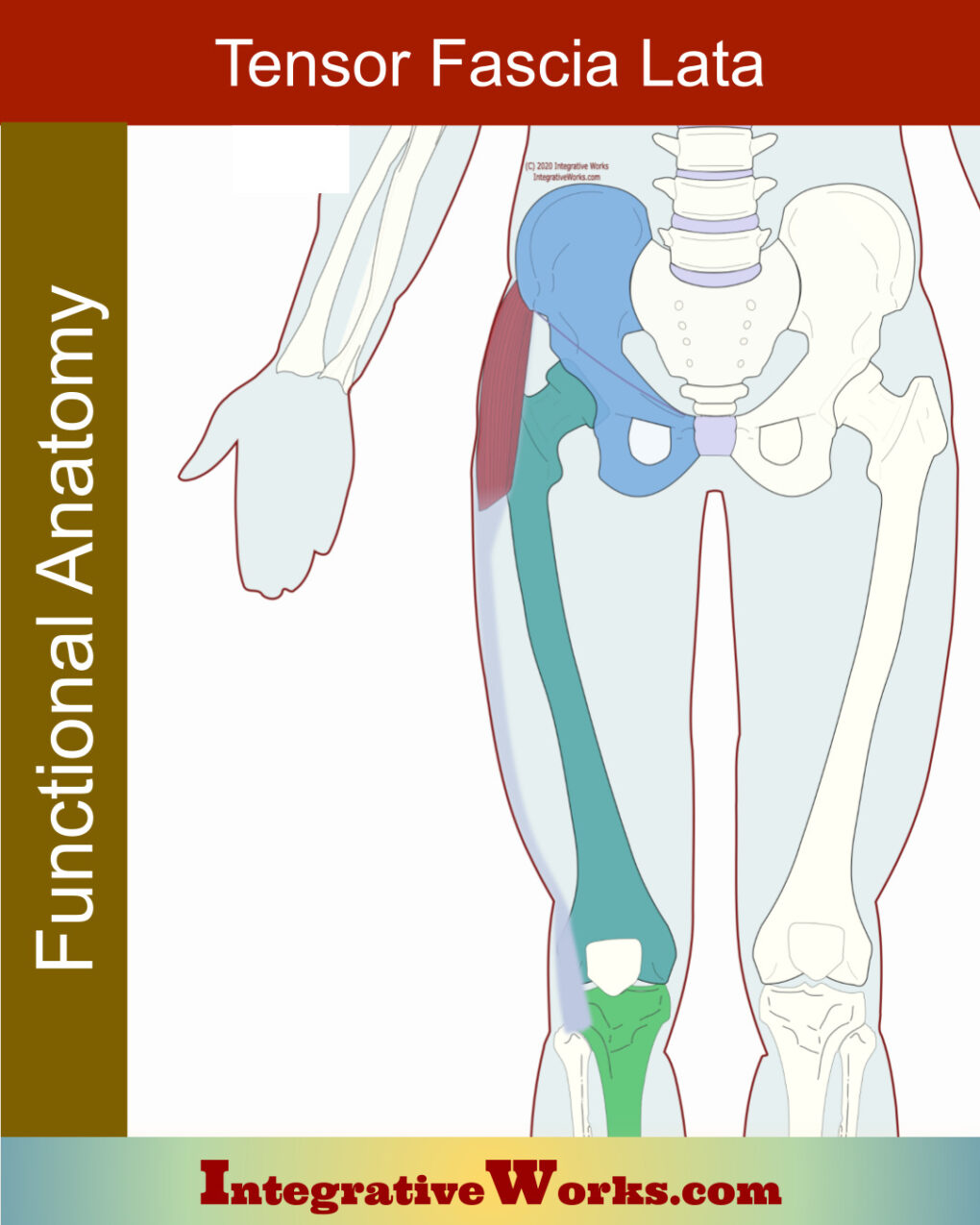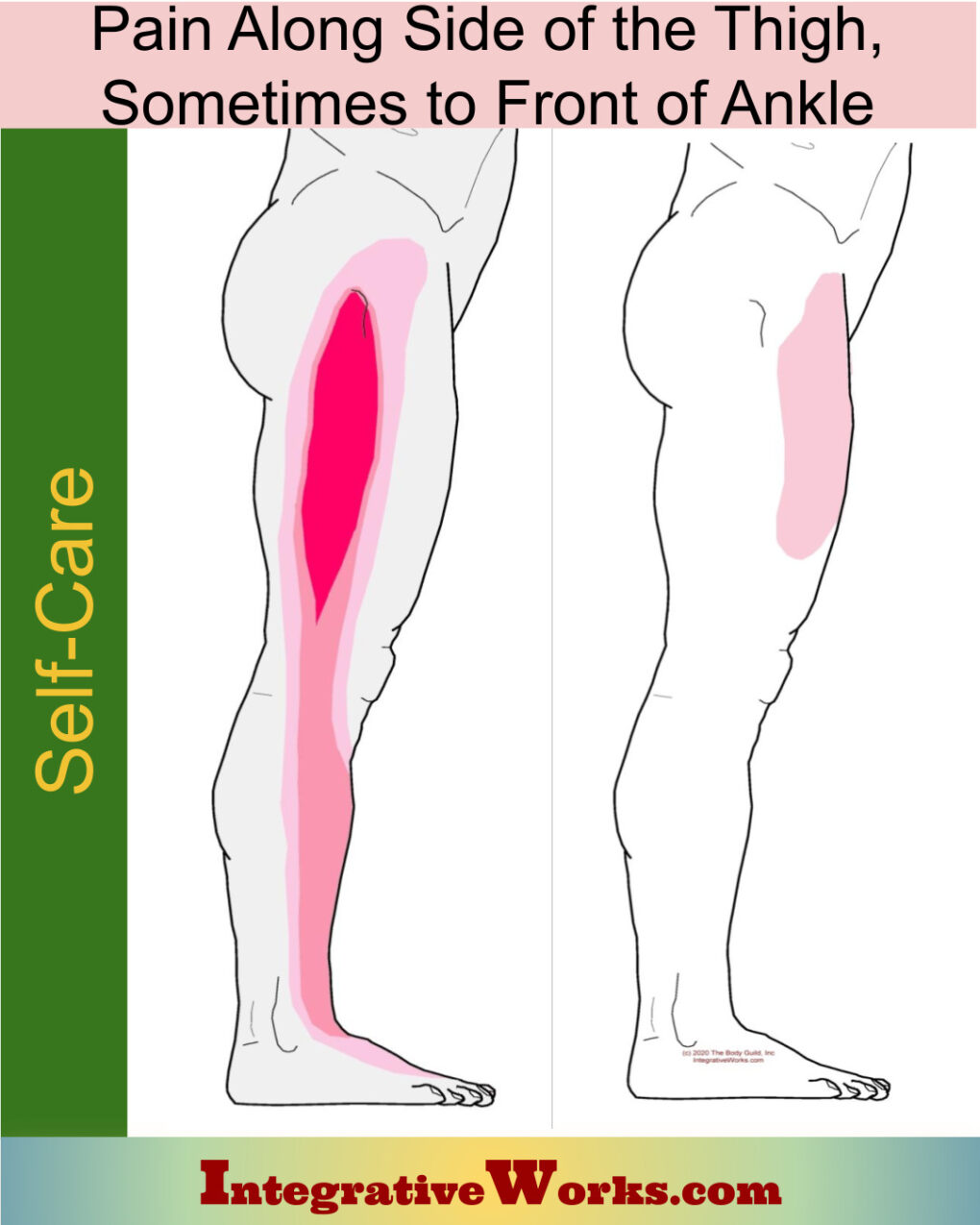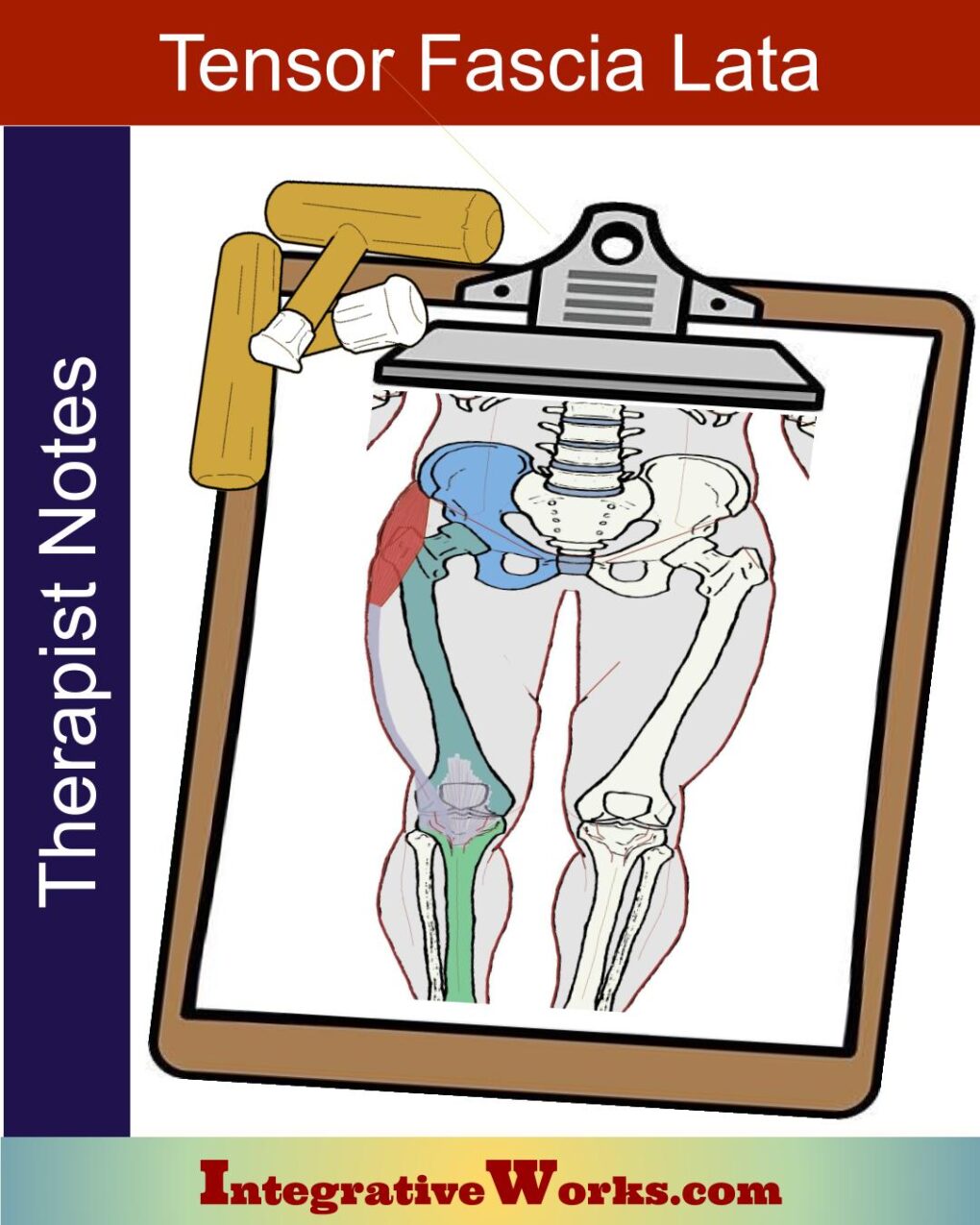Table of Contents
- How People Describe This Pain Pattern
- How You Activate and Intensify This Pain Pattern
- Self-Care – Getting Relief on Your Own
- Musculoskeletal Anatomy Behind Your Pain
- Therapy Notes for Massage and Bodywork
How People Describe This Pain Pattern

These people complain of pain along the side of the thigh, often down to the knee. Reflexively, I’ll ask if it extends down to the ankle. Usually, they say it does. Then, I ask if it refers to the behind the ankle or in front. When they say that it goes in front of the ankle, often to the big toe, it indicates this pattern.
If they say that the pain extends behind the ankle, it is more likely to be this other pattern.
This trigger point is in the tensor fascia lata, which may also create tingling in the thigh or pain on the side of the knee.
Often, they were misdiagnosed with trochanteric bursitis, sciatica, or degenerative discs.
How You Activate and Intensify This Pain Pattern

Sports
Commonly, sports aggravate this trigger point. Skiing, cycling, jumping, running on the beach, and other activities that involve slight flexion with side-to-side movement can activate this trigger point.
Prolonged Sitting
Additionally, sitting for long periods while leaning forward or with legs crossed can stiffen this muscle when it has latent trigger points. Naturally, this may lead to stiffness on rising. Frequently, this occurs when the person sits at a counter or table with their legs spread because of inadequate legroom. Conversely, this tightness can make it challenging to keep the knees together while sitting.
Further, sleeping in a fetal position or with the legs awkwardly flexed can increase trigger point activity in this muscle.
The Musculoskeletal Anatomy Behind Your Pain
Musculoskeletal Anatomy
This post on anatomy contains standard information about the origin, insertion, function, and innervation of muscles. Additionally, it includes information on functional considerations and anomalies.
Find Related Posts
Anatomy posts have a grid of all related posts. This includes posts on pain patterns, self-care, therapy notes, NMT protocols, cranial techniques, and cases.
Getting Relief on Your Own
Clinically Proven
Self-Care Strategies
Self-Care Posts have common sections to make them easy to follow and understand:
- Activities to Avoid or Change
- Strategies for Quick Relief
- Stretches and Exercise for Longer-Lasting Relief
- Yoga Corner
Therapy Notes for Massage and Bodywork
Better Bodywork
Through Shared Expertise
Therapy Notes provide details for cranial, spinal, and local joint work. These notes also link to a traditional neuromuscular protocol.
By treating integrative components first, direct work on the muscle becomes less intense while providing longer-lasting relief.
Support Integrative Works to
stay independent
and produce great content.
You can subscribe to our community on Patreon. You will get links to free content and access to exclusive content not seen on this site. In addition, we will be posting anatomy illustrations, treatment notes, and sections from our manuals not found on this site. Thank you so much for being so supportive.
Cranio Cradle Cup
This mug has classic, colorful illustrations of the craniosacral system and vault hold #3. It makes a great gift and conversation piece.
Tony Preston has a practice in Atlanta, Georgia, where he sees clients. He has written materials and instructed classes since the mid-90s. This includes anatomy, trigger points, cranial, and neuromuscular.
Question? Comment? Typo?
integrativeworks@gmail.com
Follow us on Instagram

*This site is undergoing significant changes. We are reformatting and expanding the posts to make them easier to read. The result will also be more accessible and include more patterns with better self-care. Meanwhile, there may be formatting, content presentation, and readability inconsistencies. Until we get older posts updated, please excuse our mess.





